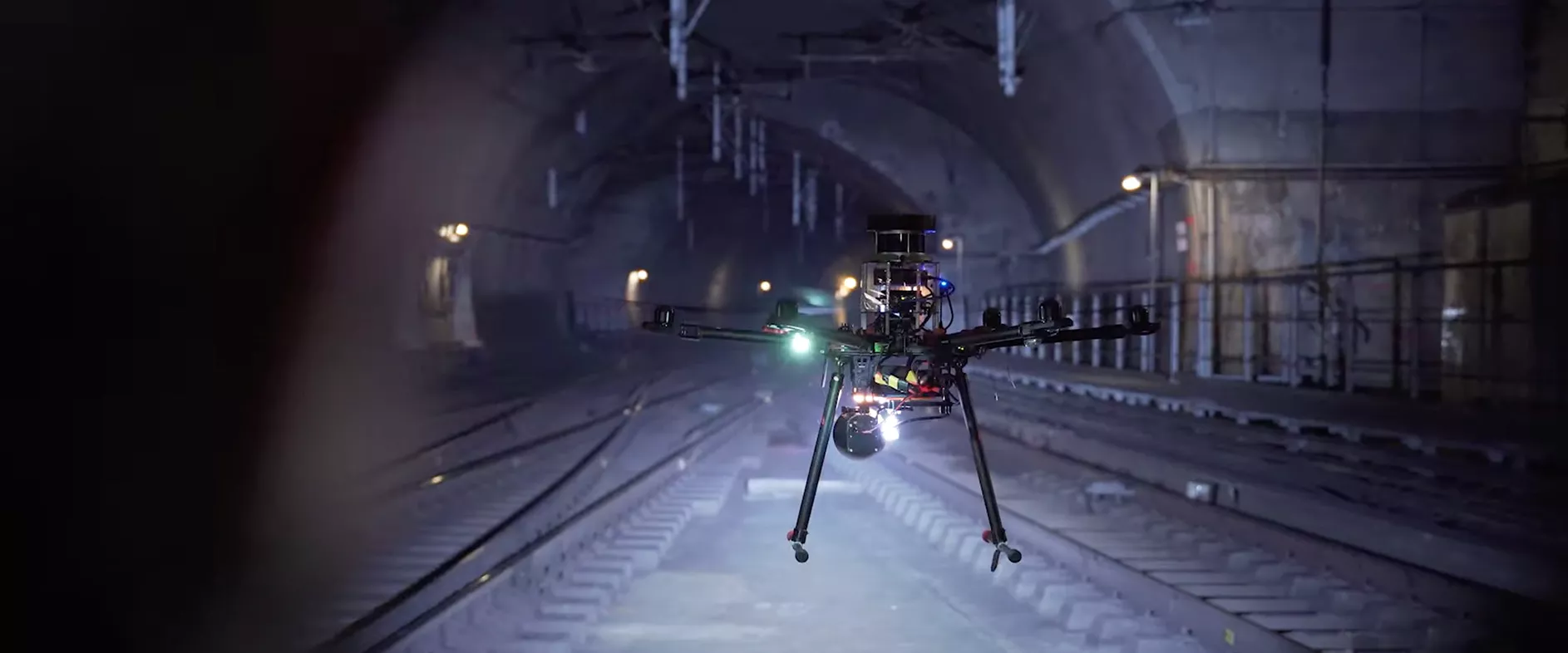
Using robots to make trains more punctual
Meet the autonomous drone and rolling robot that could make SNCF workers safer, reduce the impact of rail incidents on your commute, and make your trains more punctual.
Several metres below ground, on Saturday, 20 March 2021, a strange ballet played out in the dark tunnel at Magenta station in Paris. A compact autonomous drone designed by an Italian firm, and a rolling robot called Yak, designed by a start-up in Hauts-de-France (northern France), inspected the tracks on the RER E commuter line.
Below ground, our robots are hard at work
Slashing track incident report and assessment time.
The drone was created as part of ESMERA, a European robotics programme. The robot was designed with funding from SNCF. And both should be a big help to our employees in assessing track problems. In the process, they’ll also make life easier for future passengers on Eole2, the new section of Paris’s RER E commuter line. Set for completion in 2026, this westward extension will run from Haussmann Saint-Lazare to Mantes-la-Jolie. How can robots benefit passengers? By sharply reducing the amount of time between a track incident report and full assessment of the problem by one of our expert technicians.
Ensuring trains run on time is essential
A discarded beer can jams a set of points. A signalling problem crops up in a tunnel. “Today, it takes around 1.5-2 hours for one of our employees to fully assess an incident in a tunnel on the Eole line. Which means that rail traffic could be interrupted for the same amount of time,” says Louis-Romain Joly, head of the Robots and Humans programme in our Innovation & Research division. That could be particularly burdensome for passengers on the new RER E commuter line, which plans to run as many as 22 trains an hour during peak periods.
A robot could assess the problem in less than 20 minutes.
“Using robots to carry out autonomous inspections could significantly reduce downtime and limit the hazards of tunnel work for our employees, including falls and prolonged exposure to fine particulates,” he adds. Because the robots are parked at the back of the station, they can be on the scene in under 20 minutes. All the technicians need to do is “wake them up” when a tunnel incident arises.
“A robot is another pair of eyes—but it will never replace a brain.”
“It’s by no means a 100% automated system,” says Louis-Romain Joly. “The robot is an extra pair of eyes, not a brain. By relaying images from the tunnel to our technicians, it helps them assess issues and eliminates some of the risks they would run by physically accessing a remote site.” But for decision-making and problem-solving, we’ll continue to count on our people and their expertise.
Our teams in the Robots and Humans programme hope to put one of these solutions to work by the time the RER E extension is complete. They may even be used in other tunnels around Paris and in other regions.
Learn more about our autonomous drone prototype
Meet Yak, our autonomous robot
Share the article